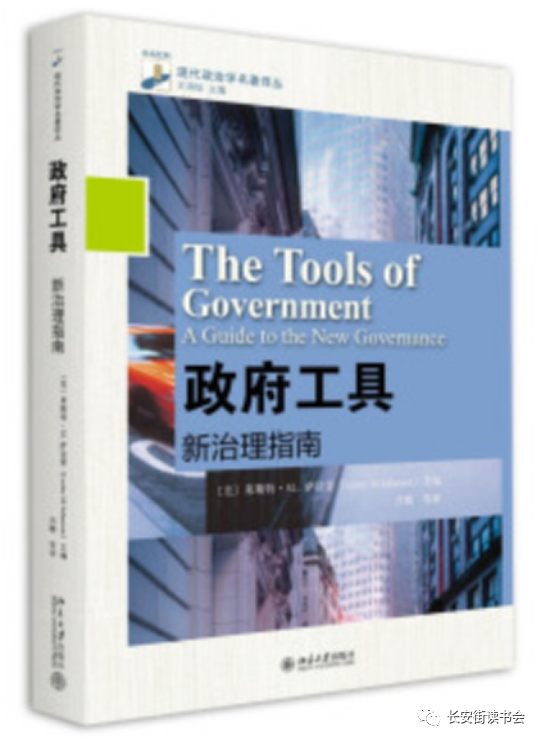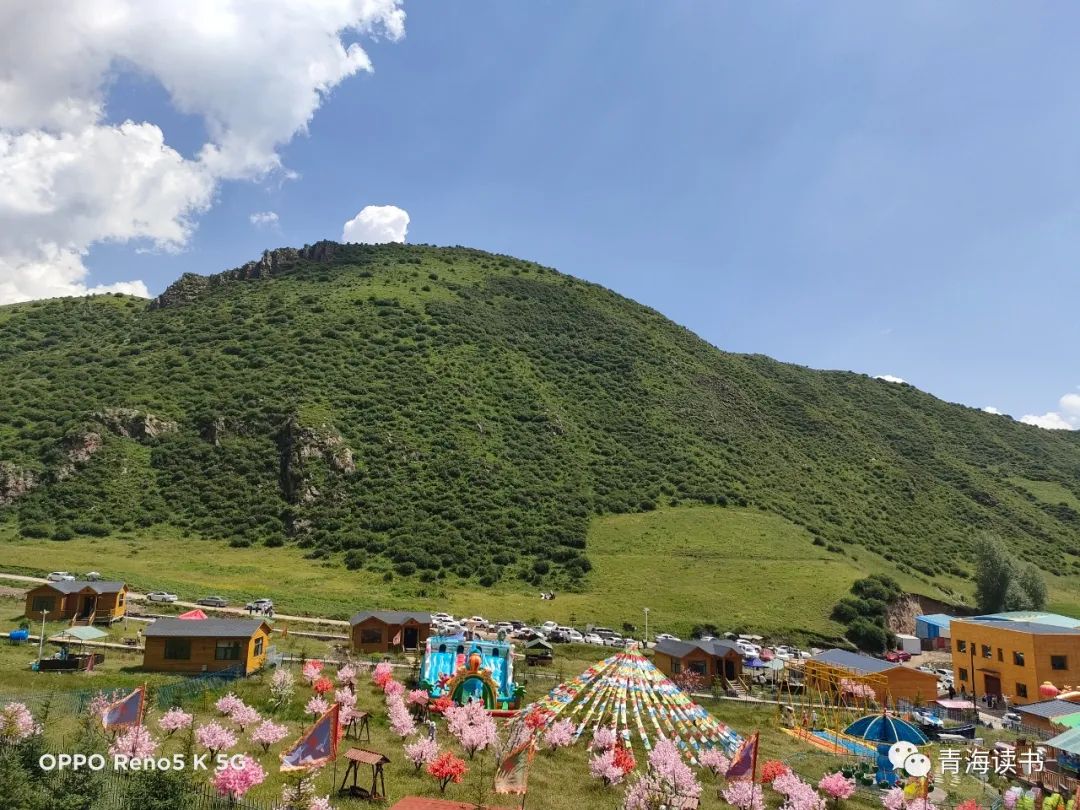"Good Book Recommendation" understands the change of public governance in the great era- "Government Tools: New Guide to Governance" book reviews
Author:Chang'an Street Reading Club Time:2022.08.09
Understand the change of public governance in the Great Age- "Government Tools: New Guide to Governance" book review
Recommended books

★★★★★
1. Research background and overview of this book
This writing was in 2001. At this time, when the global governance reform was in full swing, the profound reflection on how to deal with public issues also form a wave of global scope. The questioning of the public sector and the dissatisfaction with the cost and efficiency of government projects have caused the government to face an unprecedented legitimacy crisis, and the demands of reform have been quietly born. The challenges of government innovation, streamlined, privatization, decentralization, decentralization, decentralization, reduction of regulation, and performance evaluation have gradually pushed the government's wisdom and endurance to a higher level. Paradoxically, the voice of reform and waves from the voices of reform comes from a series of criticisms for the government -government agencies are strict levels, absorption of markets and citizens, serving the interests of bureaucratic individuals and organizational interests, and the hierarchical chain that depends on administrative orders. … At the same time, it has ignored the fact that the modern government structure has achieved the facts of these reform demands to a certain extent -the technical means of public management have begun to change.
Based on such a background, the author pointed out the many dilemma in the field of public management and proposing new governance theories in combination with the trend of change, which is both based on reality and mapping. It is also a guidance and direction of the current public management issues. The author pointed out that the core of this change is not only the fundamental adjustment of the government scale and behavior scope, but also in the profound transformation of the basic form of politics. The way of handling public problems, means, and policy tools increase Government officials directly provide products and services, and today's policy tools are more abundant, which is more flexible and effective for solving public problems. However, it also brings new challenges to the handling of public issues due to the characteristics of the new tools itself. That is, each policy tool has its own unique operating procedures, which requires different skills and provision mechanisms. In other words, the new type of policy tools have a high degree of indirectness -high dependence on the third department and other levels of government. For one -dollar subject, in the face of authorization, decentralization, control, and how to enable multiple subjects to effectively coordinate the challenges to solve public problems. The participation of a complicated third department also allowed public management issues to exceed the boundaries of the public sector. The era that only focused on the government's own operation and internal environment was gone.
The ridicule of contemporary reform literature and political rhetoric, in the past, when the regulations that rely on centralized and hierarchical government agencies have passed, the policy tools are dominated by the most extensive public policy practice today. Among them, it cannot be ignored. The topic of avoidance is the complex relationship between public institutions and third -party partners. How to analyze and relatively different tools? What characteristics of different tools are the most important? What factors affect the choice of tools? How to deal with the scope and challenges of different tools and challenges? As a new method of solving the new method of public problems, it is necessary to make a meaningful answer to the above questions. Therefore, the author has constructed three key theories of new governance: one is the theory of tools, the operating characteristics of different tools, participating in the subject, and how to construct the entire process; the second is the design theory, about how to follow the goals and political environment for seeking and the political environment. The problem that needs to be solved is matched with the corresponding tools; the third is the operation theory, and how to operate these tools in the most effective way to achieve the goals. 2. Reading and thinking
(1) The relationship between "new governance" and "governance"
One thinking is that new governance is more to serve the author's writing purpose, that is, focusing on policy tools, not analyzing governance as an overall theory. As the author wrote in this book, the word "new" of the new governance is mainly due to the "government action tool". But at the same time, I am not sure if my thoughts are in line with reality, or the difference between the two is too tangled, but in fact the two do not have essential differences, or this difference does not affect the viewpoint of this book's point of view of this book. The grasp, or this difference is academic without substantial significance, but is it too stubborn? I can't think of it, I am very worried, I am worried ...
(2) How to solve the challenge brought by new governance
When the author conducts theoretical construction of the new governance tools: New governance tools recognize the nature of government behavior as a new method for solving public problems -cooperation is important, and it can bring new ideas and methods to the solution of public issues to the solution of public issues. , But at the same time, it also emphasizes the challenges brought by the new governance, and it is not dedicated to this. But is it only the first step to realize the existence of challenges? For example, for the new network structure that is different from the extensive third parties and the government different from the traditional public administrative single subject, the goals, operating styles, skills, motivations, and priority matters in the network are different. Therefore Even more complicated dilemma, so is the purpose of new governance tools -whether the original intention of solving and promoting cooperation is contrary? How to solve? Of course, this is not a full blame for the author. After all, the main direction of this book is not here. The author's point of view of this issue actually has a far -reaching inspirational role in us. How to solve the challenges brought about by new governance is not just acknowledging and pointing out the challenge. I think this is also a way to continue thinking and digging the depth of thinking in the process of reading, that is, from the author's questions, thinking about these How to solve the problem, this process may be extremely difficult but interesting.
(3) How can effective cooperation be achieved?
The third is a thinking, about "cooperation." Since the development of theory and practice in the field of public management, the objective requirements of the problem solving orientation have been ended in the era of a single subject. The multi -subject, network structure, and complicated and novel governance methods have emerged endlessly, and the difficulty of "cooperation" has become increasingly increasing. From the logic of Olson's collective action to the governance of Ostrom's public affairs, humans summarize a system of systems and methods in solving collective actions, collaboration and cooperation. However The real environment, based on many reality and case summaries, often appears weak and pale. It seems that all we can do is to go as much as possible to approach the change of reality. Just as the emergence of rules and systems is to make human behavior expected, to promote the cost of collective actions and reduce cooperation, "cooperation" seems to be the ultimate direction of many theories and practice today. It is still a third -party governance in many public issues. Whether it is the era of governance, the return of multiple subjects or the post -governance era for the return of human humanities and human nature, it seems that cooperation is an essential means. The cooperation has become more and more difficult in the process. From the cooperation of the same interest group to the cooperation of different groups, from one field to cross -domain cooperation, from a system internal cooperation to multiple systems to cooperate, and cooperation in multiple systems. These are testing our wisdom, and at the same time let us reflect on how to promote cooperation with more effective and more practical means to achieve collective actions and problems.
At the end of the report, it was almost early in the morning, and his thinking became a bit messy. Looking up and seeing the book "Partnership of Privateization and Public and Private Department" in Saavas, I thought that the two books could actually make a simple comparison. It is essentially an analysis of the introduction of new methods and subjects in the field of public issues, but The writing context and architecture of the two books are very different. In contrast, the analysis framework of the government tools is analyzed by the analysis framework of each chapter of the book. The theme "Guide" is the word "Guide", but at the same time, it also needs a certain theoretical skills and patience for readers. Comparison), challenges and other aspects allow readers to have a systematic perspective on privateization. The differences between the two books are not only related to the author's background experience, but also related to the view and purpose of the author's own intention. This big background is considered that the writing background of this book cannot be ignored. Eternal things, gains and losses know. Writing a book so and reading is the same. Reading the Chinese characters in the Chinese characters reflect on the author in the process of writing, but at the same time, it is not restricted to the details of the book, and the specific tedious details are described and described from the description of the details. The essence of the author's point of view as a whole is both a test and a growth.
Wang Yan: Members of the Ph.D.
": 10," pid ":" 10112937421 "," biz_uin ":" 3002294955 "," Trace_id ":" 856C4EE5-D485-409d-A8BB-F87a55ce3F00 "," SKU_ID ":" 101_12937421 "," SOURCE_ID ": 2, 2, 2, 2, 2, 2, 2, 2,""Source_name": "JD.com", "Audit_State": 1, "main_img": "https://img.zhls.qq.com/3/cda04369014e936ee71200dca075.jpg", "Product_name"1 " /> More exciting, please click on
New Book Recommend Chang'an Street Reading Club No. 20220802 Cadres to Learn the New Book List
Chang'an Street Good Book Changan Street Reading Club Annual Recommended Cadre Learning Book List (Classic, Popular Articles)
Party Construction Reading Chang'an Street Reading Club "Excellent Cooperation Unit 2021"
- END -
Pei Ximin 丨 Fortune Chase Dream Road to welcome the 20th National Congress -Shanxi Provincial Literature and History Research Museum and researcher online work exhibition

PrefaceThe exhibition of online works of the Shanxi Provincial Culture and History...
[Qinghai Online Network · Prose] In summer, I am so tour

It is another sunny day. The gently gauze on the clear sky stretchs, elegant, as i...